How To Clean Virus From Windows 7
How to remove a virus from a PC
Whether you have a virus or another kind of malware, the following steps will assist you go rid of the virus immediately and repair your machine.
ane. Download antivirus software
At that place are two chief types of antivirus software that can find and remove computer viruses and malware: real-time and on-need. A real-time malware scanner scans for viruses in the background while you lot're using your computer. An on-need scanner, like Microsoft Defender, has to be turned on every time you want to cheque for malware.
For full virus and malware protection, especially against new and emerging threats, install real-time malware scanning and removal software like AVG AntiVirus Free, which offers stronger protection than the standard tools you get from PC manufacturers.
2. Run a virus browse
Afterwards installing your antivirus, you need to scan your computer for whatsoever malware by running a total virus scan. A comprehensive scanner like AVG's volition search your reckoner for any malicious lawmaking hiding in Windows. Simply open your antivirus app and select Scan or Smart Browse.
three. Delete or quarantine infected files
After scanning your PC, your antivirus software will let you know if any malware is found. Follow the steps to remove the virus or put whatsoever infected files to quarantine.
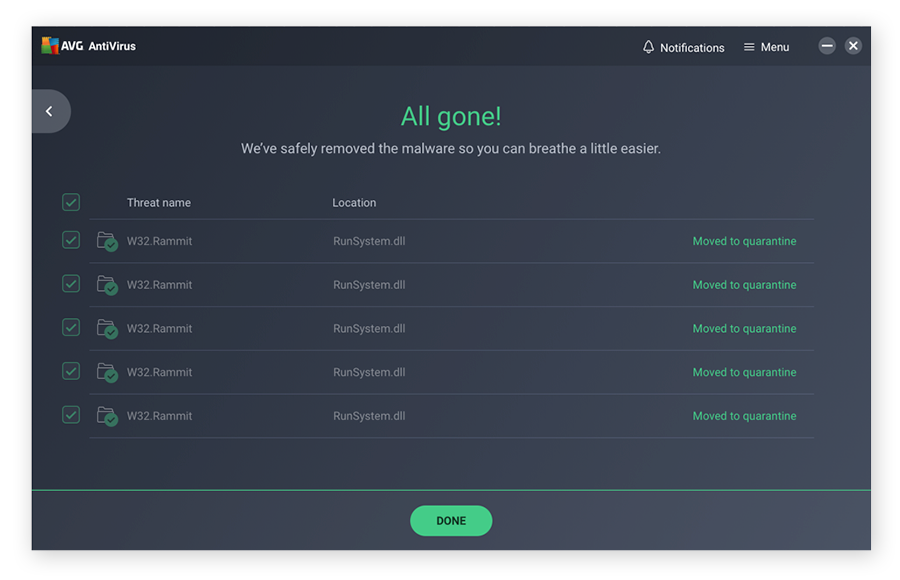 AVG AntiVirus Gratuitous hands removes viruses and prevents future malware infections.
AVG AntiVirus Gratuitous hands removes viruses and prevents future malware infections.
iv. Restart your computer
After deleting the infected files, restart your estimator and your malware infection will be gone.
More virus removal options
If the steps to a higher place don't go rid of the infection, yous'll demand to scan your computer more thoroughly in case you take malware, like a Trojan to adware, lodged deep in your system.
Enter Safe Mode
First, restart your estimator in safe style, which is Windows's bones startup settings with but your necessary files, programs, and drivers running.
To enter Safe Manner on Windows 10, agree downwardly the Shift central while selecting Ability > Restart. After your figurer restarts, select Troubleshoot > Advanced options > Startup Settings > Enable Safe Mode.
Delete temporary files
Adjacent, erase your temporary files to remove any malicious apps or programs you may have recently downloaded that might be causing your malware infection.
Hither's how to delete temporary files in Windows 10 while you lot're in Safe Way.
Showtime typing Disk Cleanup into the search field on the Windows taskbar and select it when it comes up. And so, scroll through the list of files to delete and check the box adjacent to Temporary files. So click OK.
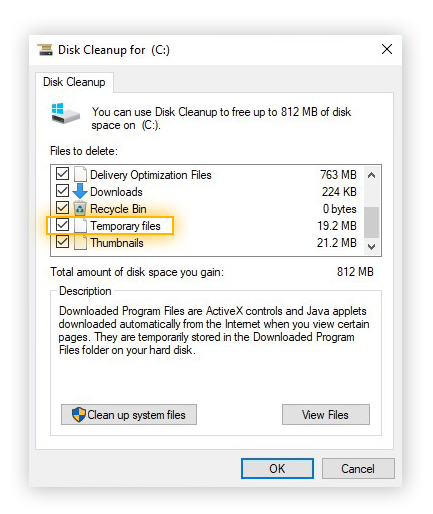
Removing temporary files will go rid of whatsoever malware that recently entered your system — and it will help you speed up your computer, too.
Schedule a boot-time scan
If you tin can't go rid of the virus later on deleting your temp files, then the malware could be programmed to showtime when your reckoner boots up. In that case, yous need to run a boot-time virus scan.
A boot-fourth dimension browse is an advanced antivirus feature designed to root out organisation-level malware earlier the operating organisation and other programs kick up.
To run a boot-time scan, open your antivirus app and in the scans tab or in the settings, you'll see an option for a boot-fourth dimension scan. You should also meet options nearly what to do with whatsoever infected files establish during the scan: fix, movement to quarantine, or delete. Choose your preferred setting.
After you've set up your boot-time scan, the next time you lot restart your PC, your antivirus will automatically scan your computer for any threats. Note that kick-time scans can have a while, and so your next restart will probable take longer than normal.
How to remove a virus from a Mac
If your Mac has malware, you demand to get rid of it straight away. These steps will help you remove malware on a Macbook, iMac, Mac mini, or any other type of Apple computer running the macOS (formerly known equally OS X) operating system.
To learn more about the Mac threatscape, cheque out our in-depth Mac security guide. Otherwise, if you're noticing suspicious activity, hither's how to get rid of malware on your Mac:
one. Install the latest macOS update
Updated software ofttimes includes patches that plug security vulnerabilities in previous versions. The latest version of macOS will have the most up-to-date anti-malware protections.
To update macOS, click the Apple tree icon in the summit left of your screen, select About this Mac, and then click Software update. If an updated version of macOS is available, follow the steps to install it. Subsequently installation is complete, restart your computer and that could set up your malware problem.
2. Utilise a specialized Mac antivirus tool
The best way to make certain all malware is constitute and removed is to use antivirus software to scan your Macbook for viruses and malware. An anti-malware app volition detect and repair malware infections on macOS, Bone X, and other versions of Apple's operating organisation. Hither'southward how to remove Mac malware with a specialized Mac virus scanner.
To begin, download AVG AntiVirus FREE for Mac.
Later the download is consummate, click on the installation file to install information technology. Then, open the app and run a Mac scan.
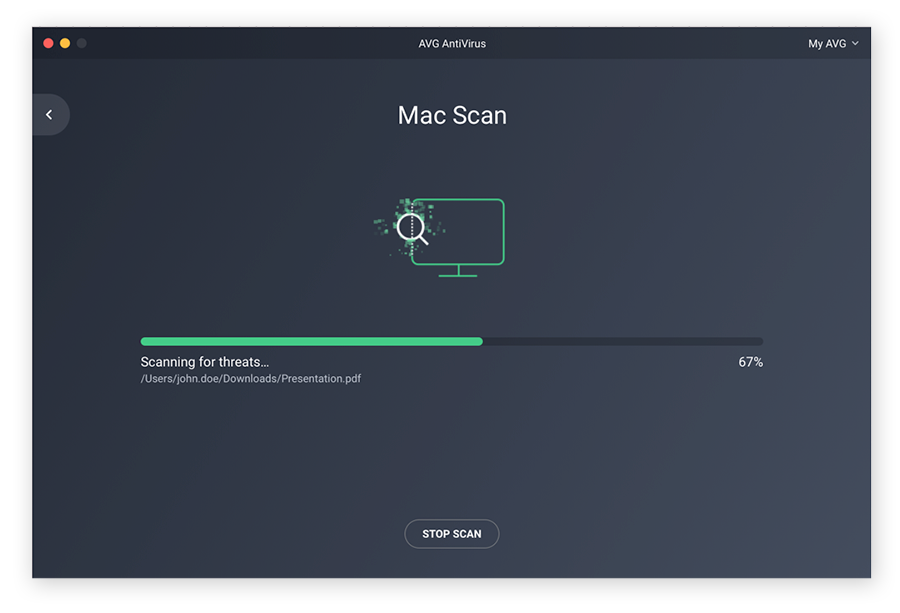
If malicious software is found, follow the on-screen instructions to delete the Mac malware.
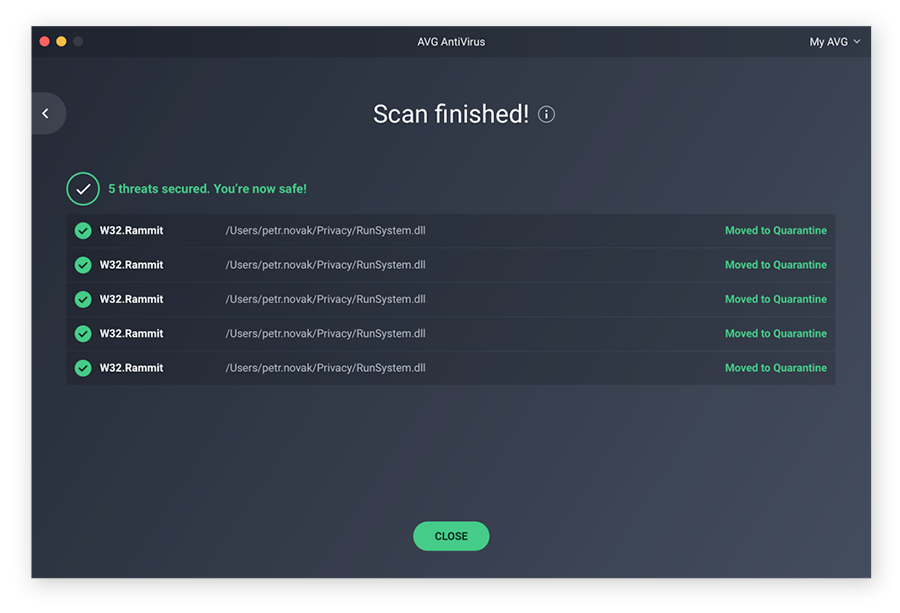
And that's it. Your Mac malware trouble is fixed, and AVG AntiVirus FREE'southward non-finish protection against new and emerging threats will go along your computer protected against viruses and malware in the hereafter.
3. Uninstall suspicious apps
If y'all have the latest OS installed and are using defended antivirus and your malware problem persists, yous should await more closely at certain apps and programs.
If the virus infection started effectually the time y'all downloaded new software, that new software may be responsible for the trouble. Although the Apple tree App Store vets apps, malware tin sneak through. And if you downloaded anything directly from a programmer's website, it could also comprise malware.
Here'due south how to go rid of suspicious apps on your Mac to root out a malware infection.
Open Finder > Applications and find any suspicious apps (apps with strange names or programs y'all don't remember downloading yourself). Correct-click on the suspicious app and choose Move to Trash.
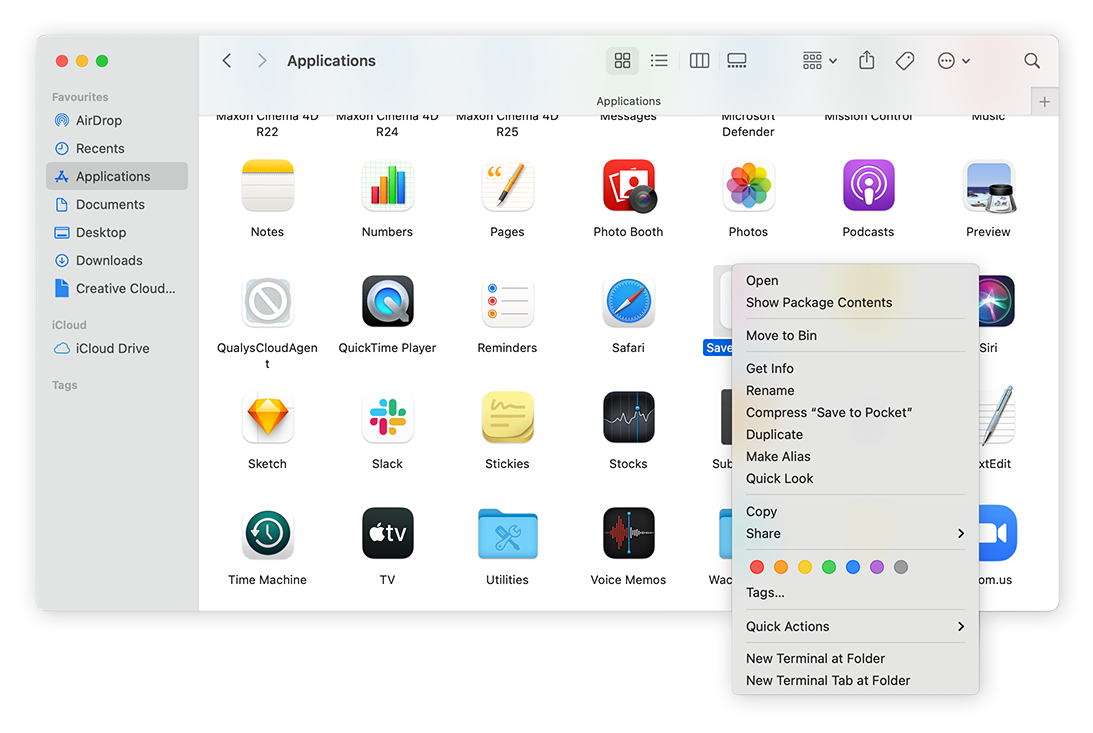
Now click on Go in the top navigation carte du jour and choose Go to Folder. Find the folder associated with the app you only deleted and drag it to your Trash.
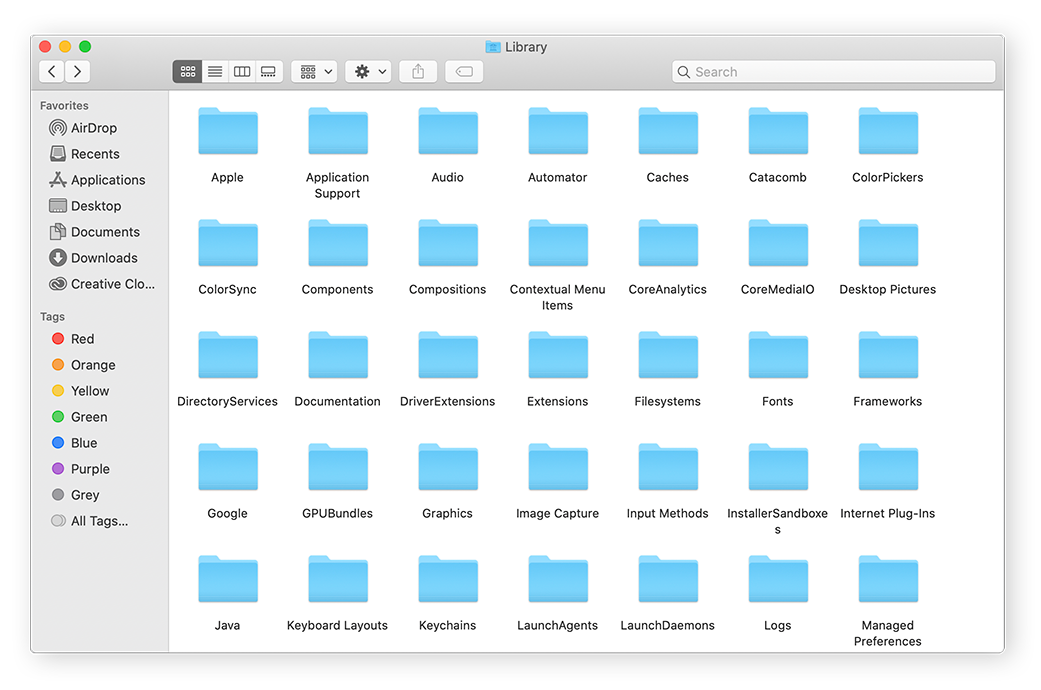
Finally, right-click on your Trash and select Empty Trash to make sure the suspicious file is completely removed from your computer.
4. Remove harmful browser extensions
Browser extensions are a common malware vector. If your web browser'due south settings have inverse and y'all're seeing things similar a different homepage, new toolbars, or tons of ads, you lot may have a browser hijacker or adware infection. Removing these unwanted browser extensions tin can help get rid of a malware infection.
Remove browser extensions from Safari
To get rid of malware in Safari browser extensions, open the Safari card and choose Preferences.
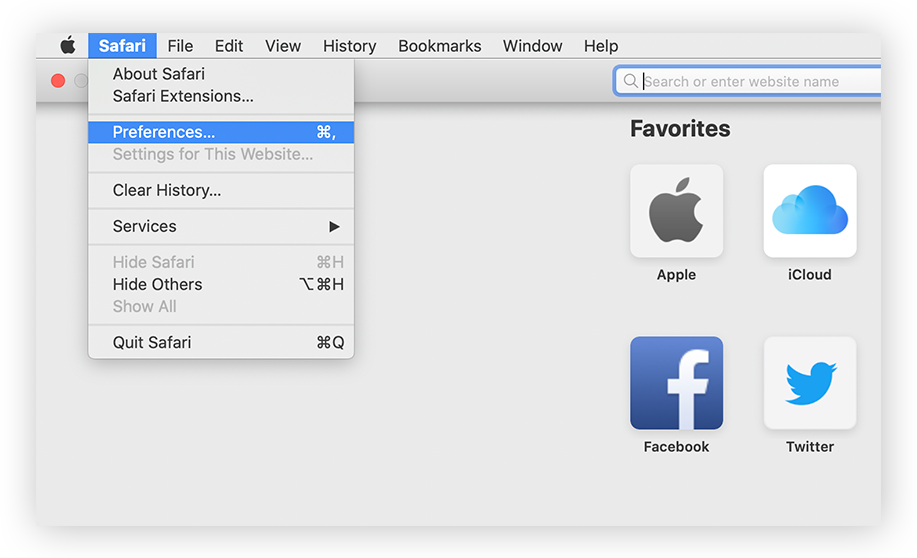
Choose Extensions in the top navigation and await for any browser extensions that you lot don't remember installing.
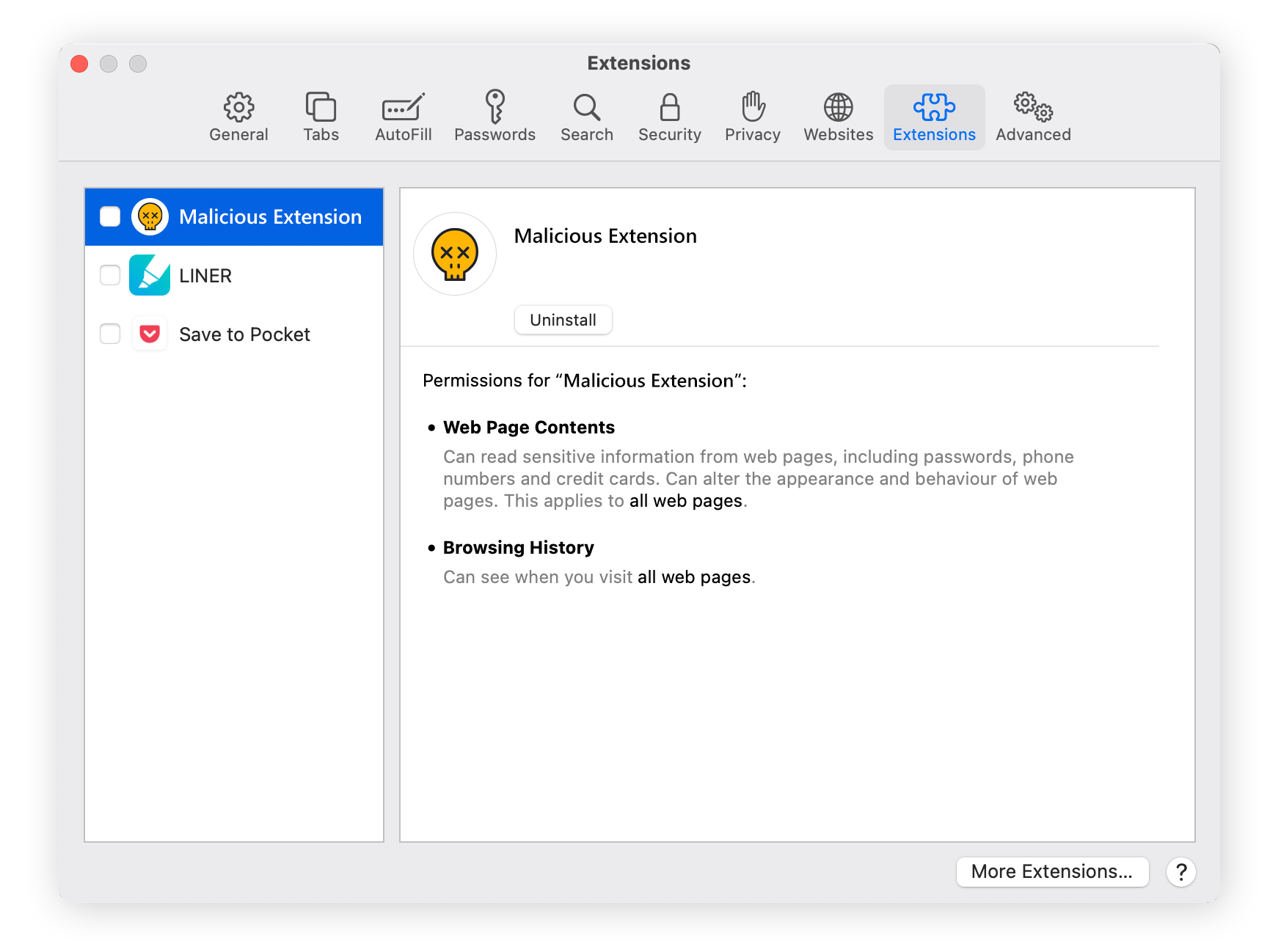
Choose the extensions yous don't need — and which may exist malicious — and click Uninstall.
And cheque out our guide to managing your Safari popular-up settings, which can help you lot minimize the take a chance of inadvertently getting malware from a risky advertising or popular-upward.
Remove browser extensions from Google Chrome
If you use Google Chrome on your Mac, hither'due south how to remove browser extensions in Chrome in case they're concealing malware.
Open Chrome and click the iii vertical dots in the upper right of the browser window. Select More Tools > Extensions.
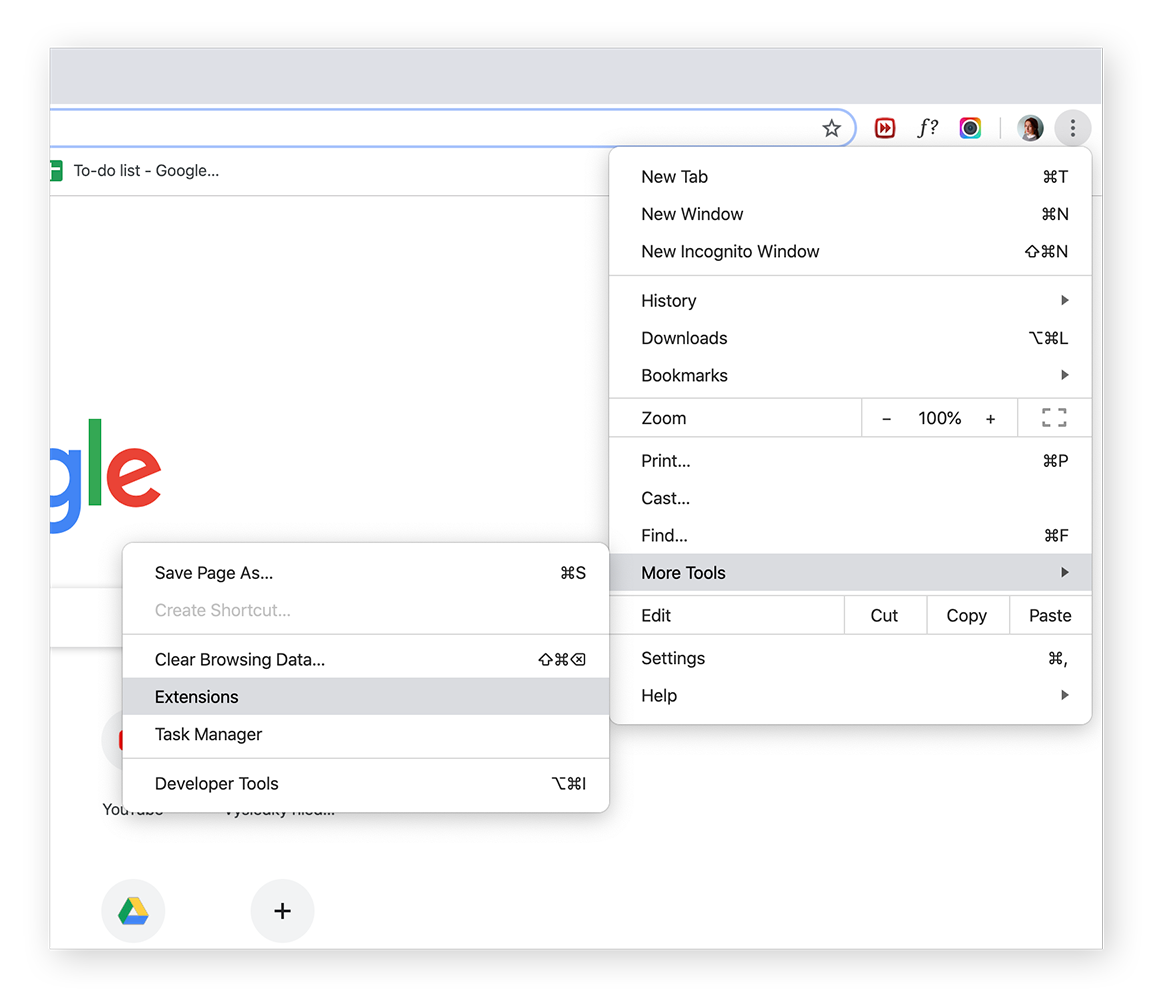
Cull any extensions that may contain malware or that you don't demand and click Remove.
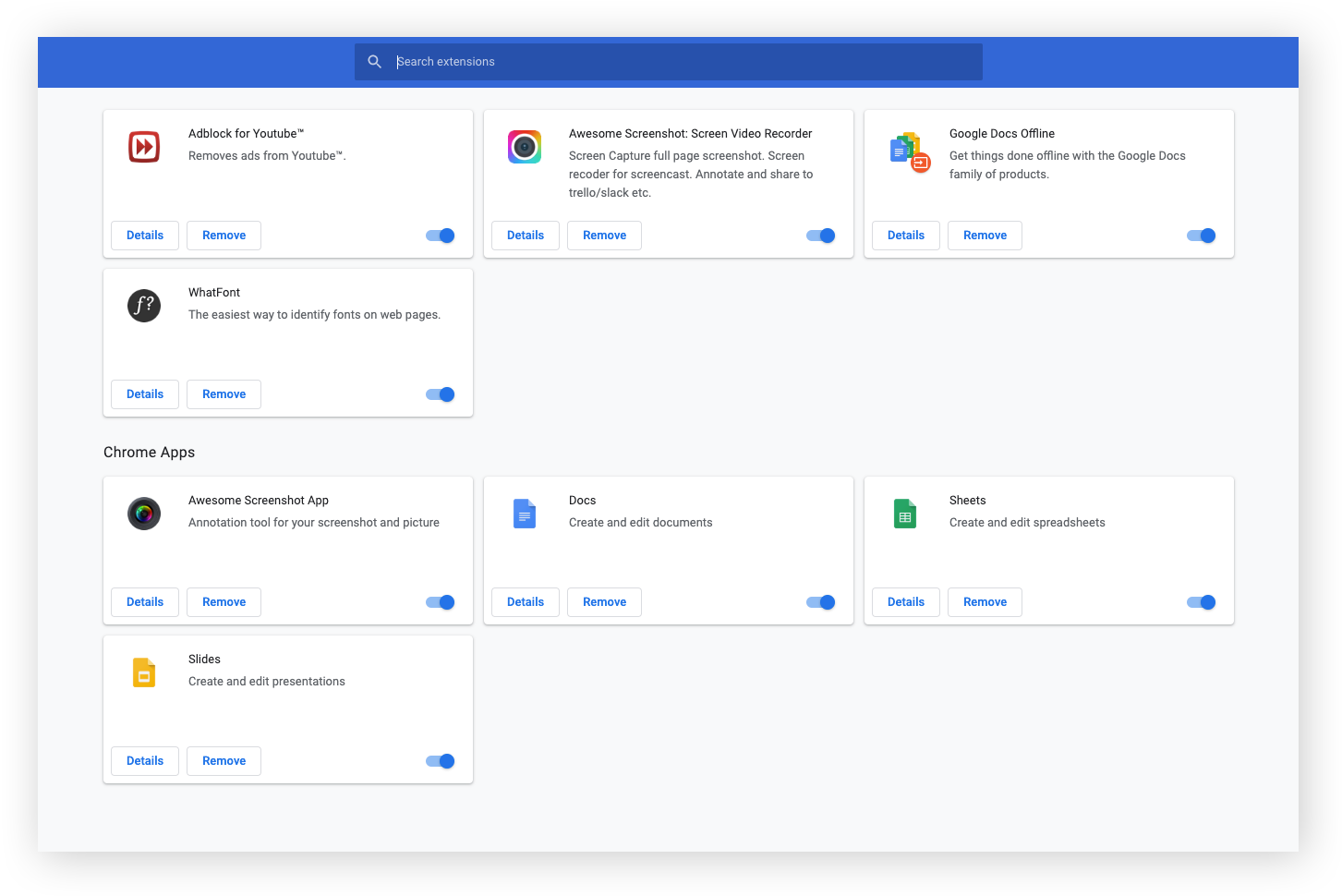
To avoid malicious browser extensions altogether, use a browser with built-in security and privacy that volition cake malicious extensions automatically.
What is a computer virus?
A calculator virus is a type of malicious software that infects a computer and borrows its resources to self-replicate and spread. Figurer viruses inject their ain lawmaking into programs or files and can take a variety of malicious actions, including corrupting or erasing files and stealing sensitive data.
How exercise computer viruses spread?
Estimator viruses spread by self-replication. Once inside your figurer, they make copies of themselves and spread via infected email attachments, poisoned macros, or malicious links. A virus might email itself out to all your contacts, who then unwittingly send it on to all their contacts, and then their contacts' contacts, causing exponential spread.
Electronic mail is one of the well-nigh popular malware delivery methods, which is why e-mail security is critical. Viruses and other malware can too spread through file sharing and software bundles. When you download an app from an unreputable source outside Apple'due south App Store or Google Play, it can come packaged with malicious software or bloatware.
Malware too spreads through vulnerabilities in outdated software. Many software updates are released to plug security holes. If y'all don't update your software regularly, dangerous hackers can exploit the vulnerabilities in old software to gain admission to a system and spread malware.
How to tell if your computer has a virus
To encounter if your figurer has a virus or other malware, wait for abnormal behavior, suspicious files or downloads, as well equally the following signs of virus infection:
-
A very slow computer
-
A very slow computer
-
Unfamiliar programs or apps
-
Different settings that you lot didn't change
-
Corrupted or erased files
-
The audio of your hard drive in abiding action
-
An incessantly loud estimator fan
-
An overheating estimator
-
Frequent crashes, freezes, or other unusual behavior
Whatsoever one of these symptoms might be caused by a virus or a different kind of malware similar spyware or a crytominer. If you're experiencing two or iii of them at the same time, that's a stiff indication that you've got a virus or may fifty-fifty have had your computer hacked.
How to avoid viruses and malware in the hereafter
Malware prevention is always easier than malware removal. Here are some quick and easy things you can practise to avoid downloading malware:
-
Install the latest software updates
Software updates include security fixes. Update your software regularly to stay protected against the latest virus and malware strains. -
Get an antivirus plan
Using an antivirus app will protect you against malware and viruses before they infect your reckoner. The best antivirus software likewise includes protection against malicious websites, phishing scams, dangerous downloads, and more. -
Back up your data regularly
Many malware strains, especially ransomware, can compromise your information. If you have a backup of all your data, you'll be able to manufactory reset your computer without losing anything. Acquire more with our consummate guide to Mac ransomware. -
Be wary of pop-ups
Avoid clicking on popular-up messages, especially those that merits to accept detected a problem with your estimator. Pop-ups designed to scare you into downloading unsafe security apps are oft only malware in disguise. -
Watch out for strange emails
Practice safety email practices, and don't open emails from unknown or untrusted addresses. If you do happen to open up one, practise not click on whatever links and don't open up whatever attachments. -
Use strong antivirus software
A potent antivirus is your best defence force in the fight confronting online threats. AVG AntiVirus FREE features powerful congenital-in engineering to block dangerous downloads and malicious websites. And with circular-the-clock software monitoring, you lot'll stay protected against whatsoever suspicious activity.
How to avoid Mac malware
Mac malware is on the rise, but some Mac users are still far too cavalier about their online security. So here are some tips to avoid Mac viruses and malware.
-
Await out for fake Mac antivirus apps.
Some Mac malware poses as antivirus apps, hitting your figurer with scary letters virtually a problem with your Mac and prompting you to run a virus browse.If y'all click, you'll actually download malware instead. This type of scareware might exist called MacDefender, MacProtector, MacSecurity, or something similar.
Don't autumn for this bulletin. If yous download something malicious from a website, quit your browser, go to your Downloads folder, and drag whatever items in in that location to the Trash. And then empty the Trash. And don't visit the website over again considering it's possible that information technology has been hacked.
-
Quit the infected app.
If you remember malware has already been installed on your Mac — peculiarly if y'all're seeing popular-up messages asking for your Apple tree ID or credit card details — quit the app or shut down the software that you retrieve might be infected.Open up your Activeness Monitor and find the app in question — or search for the malware from the list of names to a higher place. When you lot've identified the malware, click the Quit Process button, and then quit the Activity Monitor. Finally, go into your Applications folder, drag the unwanted software into the Trash, and empty the Trash.
-
Keep all your software and apps updated.
Brand sure that your Mac is running the latest operating system and that you lot've installed whatsoever updates directly from Apple. -
Use specialized Mac antivirus software.
Merely like with a PC, it is a proficient idea to equip your Mac with stiff protection against malware. AVG AntiVirus for Mac is a complimentary and comprehensive cybersecurity tool with real-time protection against malware and other security risks. And it'due south updated automatically to safeguard your Mac confronting the latest online threats.
Can't I simply utilize Windows Defender?
PC users may be wondering if they tin merely employ Windows Defender, Microsoft's built-in antivirus program, to stop malware. Although it's improved in recent years, Windows Defender doesn't offer as much protection as dedicated antivirus programs.
Windows Defender, at present called Microsoft Defender, has skilful malware prevention scores in independent tests, merely information technology sometimes struggles with malware detection. In a 2021 examination from AV-Comparatives, Windows Defender's virus detection rate was much lower than most tertiary-political party security solutions.
Defender also lacks adequate protection against phishing attacks, Wi-Fi threats, and unsafe websites (unless you lot use Microsoft Edge). Plus, Windows's own updates have a history of introducing bugs that hamstring Defender's protection abilities.
Without dedicated antivirus software on your machine, Windows Defender will provide some protection for your PC. Merely to defend confronting the latest, most cutting-edge threats — those similar zip-twenty-four hour period attacks — we recommend AVG AntiVirus Free, a comprehensive security suite that scores college in AV Comparatives tests and provides more avant-garde features.
Are my other devices safety?
Whatever connected device is vulnerable to malicious software. While a traditional reckoner virus is unlikely to spread to mobile devices, Android phones and tablets are susceptible to mobile spyware, Android ransomware, and other phone hacking tricks.
iOS devices are a bit more resistant to malware than Androids. That mainly has to do with Apple tree's defenses, such equally app sandboxing and security updates on all devices — but your iPhone isn't allowed to threats. Phishing scams, unsafe Wi-Fi networks, and identity theft can all plague iOS users. For more, check out our guide to the all-time security apps for your iPhone.
If your phone has been acting strangely and you lot think there'southward an infection, larn how to remove a virus and malware from your phone.
Get rid of viruses and malware the piece of cake way
Whether y'all want to learn how to remove a virus from a PC or get rid of malware on Mac, the easiest way is to use a robust antivirus program from a reputable developer. AVG AntiVirus Gratuitous works around the clock to give you lot 24/7 protection while also having a light organization load that won't slow you down.
Remove all traces of malicious software and stay safe against time to come infections and emerging threats. Download AVG today and join the world's largest threat detection network.
Source: https://www.avg.com/en/signal/how-to-get-rid-of-a-virus-or-malware-on-your-computer
Posted by: thomasreackagots.blogspot.com

0 Response to "How To Clean Virus From Windows 7"
Post a Comment